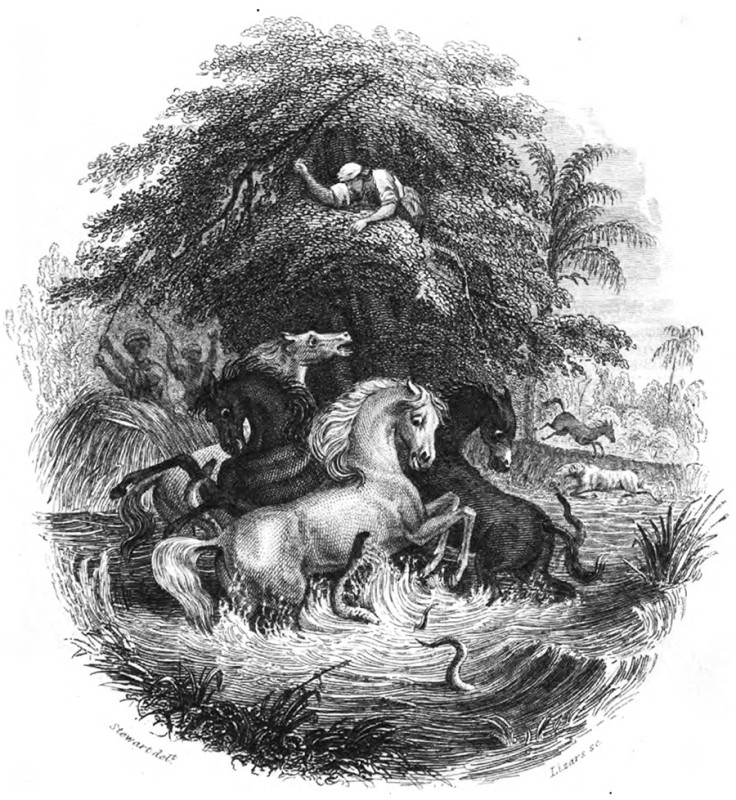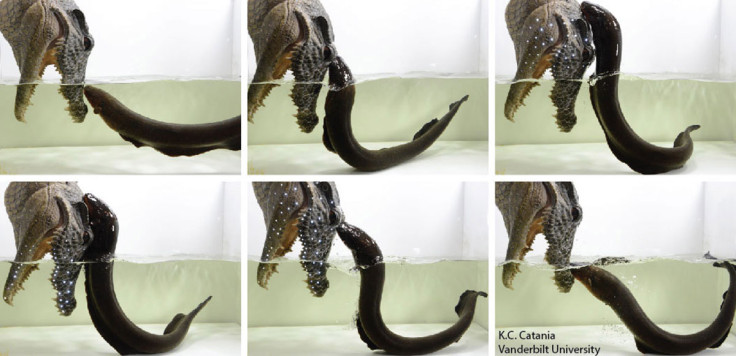Electric eels vs horses: Humboldt's 200-year-old account of 'shocking' battle was no exaggeration
Over 200 years ago, explorer and naturalist Alexander von Humboldt described a battle between electric eels and horses while on a trip to the Amazon. He told how fishermen herded 30 horses and mules into an eel-infested pool, at which point the eels leapt from the water to deliver strong electric shocks to the horses.
The horses were prevented from escaping and two drowned as a result of the attack. Once the eels were exhausted, the fishermen captured them and handed them over to Humboldt for his experiments. Humboldt's account of this encounter was met with widespread scepticism. One peer called it "tommyrot" while another said the story was nothing more than a tale. No similar observations of this behaviour had been made since – until now.
Kenneth Catania, a biologist from Vanderbilt University in Tennessee, has shown that when cornered by a potential predator, eels will spring from the water and press their chins against the threat to deliver a host of powerful electric shocks – far greater than what can be produced when the eel is fully submerged.

Publishing his findings in the journal PNAS, Catania had noticed that when transferring eels from one place to another using a net with a metal rim, they would try to escape by jumping up and pressing their chins to the handle and produce electric shocks.
All animals produce electric currents and previous research had shown eels interpret small conductors as pretty. With the net, the eels appear to see it as a large conductor (or large animal) entering its confined living space.
To see whether the eel was behaving in a defensive manner, Catania designed a series of experiments using plastic predator props with conductors inside to see under what conditions the eel would attack. He found that when eels are fully submerged, their electric pulses are dissipated in the water. When only partially submerged, however, the electric shock is concentrated so it goes directly from the eel's chin to its target. The current travels down to the tail (still underwater) to deliver the shock.

Catania found the bigger the target, the higher the eel would leap and the bigger the voltage and amperage it produced. "This allow the eels to deliver shocks with a maximum amount of power to partially submerged land animals that invade their territory. It also allows them to electrify a much larger portion of the invader's body."
He subsequently found eels were more likely to attack when the water levels in the aquarium were lowered – limiting their escape options. At the time of Humboldt's observations, water levels in the Amazon would have been low, making them more vulnerable to attacks.
Catania believes his findings fit with this historic account, with the leap attack behaviour likely evolving through natural selection because of its effectiveness. "The first time I read von Humboldt's tale, I thought it was completely bizarre," he said. "Why would the eels attack the horses instead of swimming away? In light of these findings, it seems reasonable to suggest that Humboldt observed a similar eel behaviour on March 19, 1800."
© Copyright IBTimes 2025. All rights reserved.





















